Moscow State University: description, history, excursions, exact address. Foundation of Moscow University
On January 28, 1724, the emperor issued a decree on the establishment in St. Petersburg of the Academy of Sciences, and with it a university, which was supposed to train scientific personnel. Why is Moscow recognized as the first Russian university? Firstly, the "Peter" University has never been an independent institution, did not have its own charter, and was completely subordinate to the president of the Academy of Sciences. Secondly, the academic university in the XVIII century. failed to do its job well. There were very few people who wanted to study: at first, 8 students taught as many as 17 professors! Students had to be invited from abroad. So, for example, from 1726 to 1733 in academic university only 38 people were enrolled, and only 7 of them were Russians.
The idea of creation and project of the Moscow University belongs to M. V. Lomonosov. He formulated his proposals in a letter to I. I. Shuvalov, a favorite of Elizabeth Petrovna. Thanks to the support and active assistance of the latter, the university was opened.
Not only nobles, but also representatives of other classes could enter Moscow University. The doors of Moscow University were closed only to serfs.
The university had three faculties: medical, legal and philosophical. All students began their education at the Faculty of Philosophy, where they received thorough training in the natural and human sciences. Education could be continued, specializing in law, medicine or the same philosophical faculty. Unlike European universities, there was no faculty of theology in Moscow, which is explained by the presence in Russia of special institutions for the training of ministers Orthodox Church, and teaching was conducted not only in the then generally recognized language - Latin, but also in Russian.
Two gymnasiums were opened at Moscow University (for noblemen and raznochintsy, that is, people of other ranks). The library worked, public lectures were held with demonstrations of experiments. In the university bookstore one could buy Russian and foreign books. The newspaper Moskovskie Vedomosti was published here. material from the site
Every year on January 25, on Tatyana's Day, Russia celebrates the Day of Russian Students. This is a favorite and long-awaited holiday for tens of thousands of young men and women studying at institutes and universities. This date is certainly connected with the fact that Moscow University was founded on this day.
There is a version that I. I. Shuvalov did not accidentally choose the date for the Empress to sign the decree “On the Establishment of Moscow University”. January 25 is the name day of his mother Tatyana Rodionovna. The opening of the university is a kind of gift from a mother to her son.
On this page, material on the topics:
Moscow University is considered to be the oldest Russian university. It was founded in 1755. The establishment of the university in Moscow became possible thanks to the activities of the outstanding scientist-encyclopedist, the first Russian academician Mikhail Vasilyevich Lomonosov. After reviewing the presented by I.I. Shuvalov and M.V. Lomonosov project of a new educational institution Elizaveta Petrovna signed a decree on the founding of Moscow University on January 25, 1755.
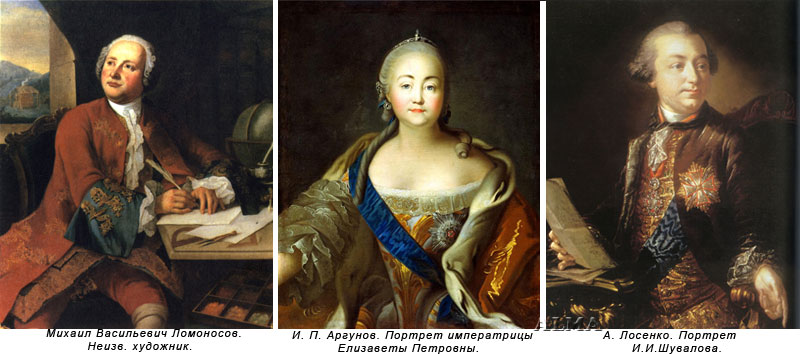
In accordance with the plan of M.V. Lomonosov at Moscow University, 3 faculties were formed: philosophical, legal and medical. All students began their education at the Faculty of Philosophy, where they received fundamental training in natural sciences and the humanities. Education could be continued, specializing in law, medicine or the same philosophical faculty.

In accordance with § 22 of the “Project on the Establishment of Moscow University”, training at all its faculties was to last three years. Admission to university students according to § 23 was carried out according to the results of an examination, during which those who wished to study at the university had to show that they were "capable of listening to professorial lectures."
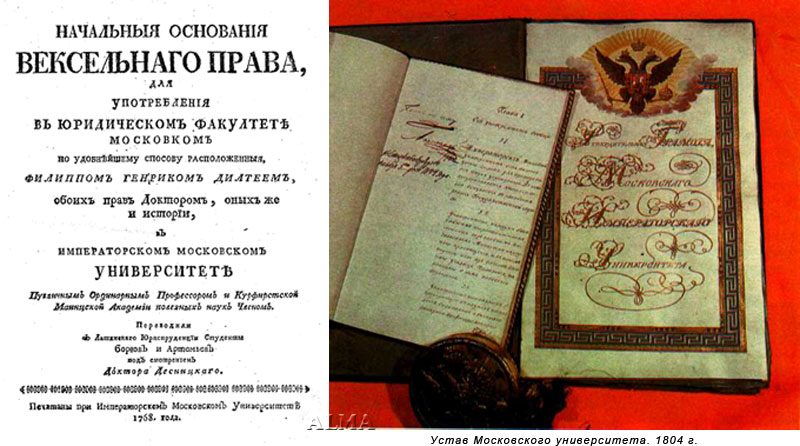
The Apothecary House was chosen as the building for Moscow University, located next to Red Square at the Kuryatnye (now Resurrection) Gates. It was built at the end of the 17th century. and resembled in its design the famous Sukharev Tower. On August 8, 1754, the Empress Elizabeth signed the decree on the transfer of the Apothecary House to the Moscow University, which was being opened. 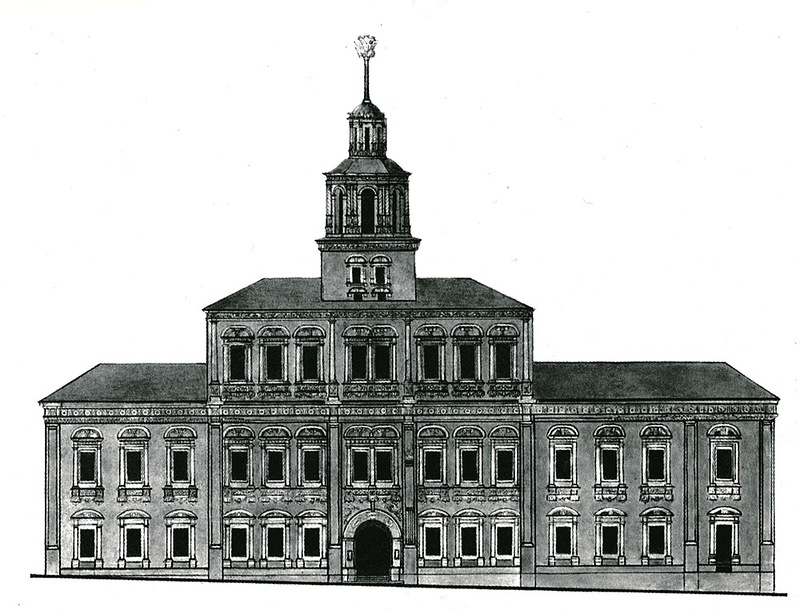
The facade of the first university building. (The City Hall building, later Offices on Red Square, at the Resurrection Gate.) 1816. Drawing of Osip Bove, who led the restoration of the center of Moscow after the fire of 1812.
In this house, rebuilt as an educational institution, on April 26, 1755, official opening- "inauguration", as they said then, - the gymnasium of the Imperial Moscow University, and with it the university itself.
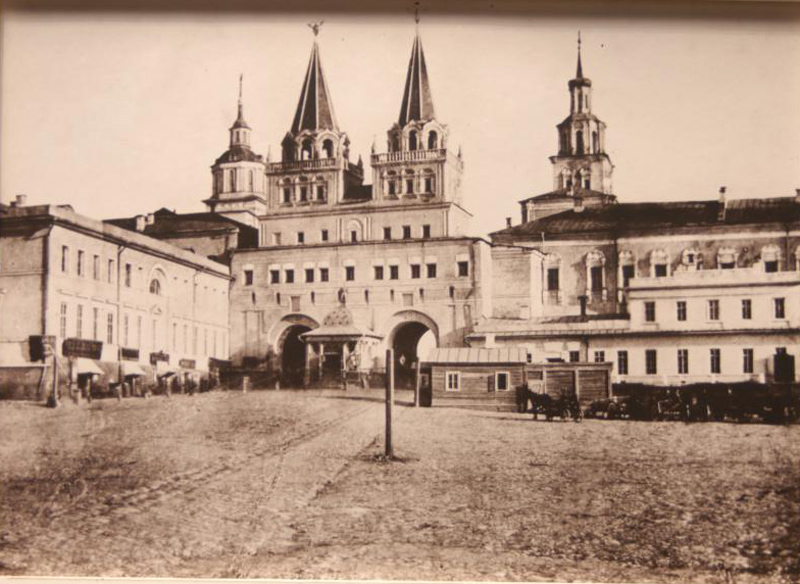
The establishment of Moscow University was presented in the decree of Empress Elizabeth as the fulfillment of the plan of her parent and sovereign Peter I, who connected the well-being of Russia with the dissemination of useful knowledge among its population. The university was conceived in accordance with such views as an educational center, which was supposed to prepare a sufficient number of "national worthy people" capable of teaching science in the "noble Russian cities"schools," from which superstition, schisms and the like from ignorance of heresy will be destroyed even in a distant simple people. At the same time, the Decree expressed the hope that young people educated and trained in a decent way would become suitable for public service and for multiplying the glory of their fatherland.

Obviously, the Faculty of Law of Moscow University was called upon to play the main role in the training of such individuals. An auxiliary function was assigned to the Faculty of Philosophy. Studying here for three years in general education sciences (logic, metaphysics, moralizing, eloquence, universal and Russian history etc.), students thus prepared for the perception of "higher sciences" at the faculties of law or medicine.
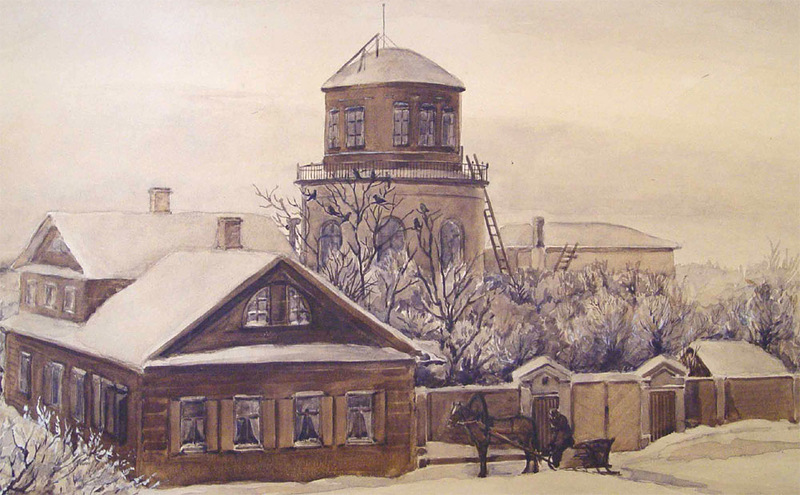
University Astronomical Observatory on Presnya.
Classes at Moscow University began on June 1, 1755 with an introductory lecture in Russian by N. N. Popovsky, a student of M. V. Lomonosov. Its main themes were the role of philosophy in the knowledge of the world and the need to teach this science at Moscow University in Russian. In September-October 1755, the number of state students was increased to thirty people. The first enrollment was completed on this: Moscow University began to operate. However, neither the law nor the medical faculties at that time were yet distinguished as independent departments of the university.

The first professor called to teach at the Faculty of Law arrived in Moscow on September 28, 1756. It was Philipp-Heinrich Dilthey (1723-1781), Doctor of Law from Mainz. In the catalog of lectures of 1759, the sciences taught at the Faculty of Law were first listed, and their teacher was named - F.-G. Dilthey, then the name of the teacher of the medical faculty of Kerstens (the only one at that time) was indicated and the lecture courses read by him were indicated, then the teachers of the philosophical faculty (among them N. N. Popovsky) and the sciences they taught were named.
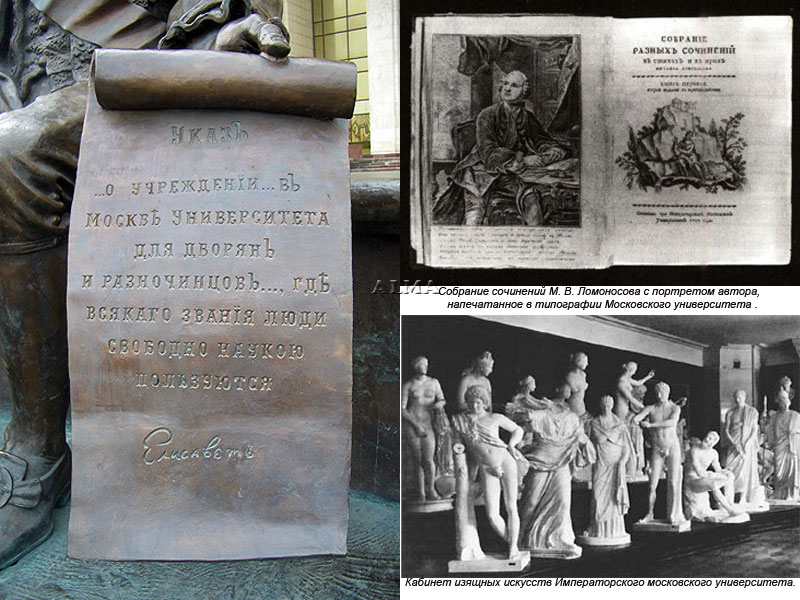
Mikhail Vasilievich Lomonosov pointed to the example of Western European universities, where the principle of estates was done away with; “At the university, that student is more respectable, who has learned more; and whose son he is, there is no need for that. During the second half of the 18th century, out of 26 Russian professors who taught, only three were from the nobility. Raznochintsy made up the majority of students. The most capable students were sent to foreign universities to continue their education, strengthening contacts and ties with world science.
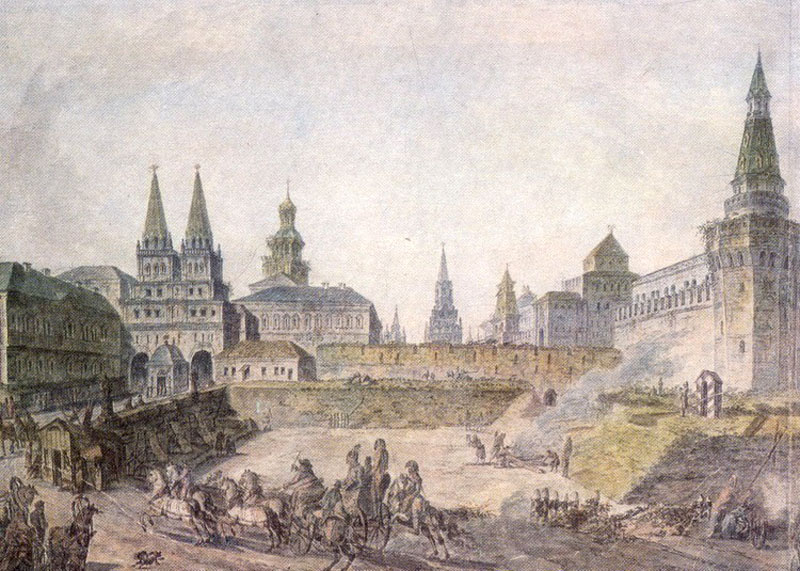
Under Catherine II, the university moved to a building on opposite side Mokhovaya Street, built between 1782 and 1793 according to the design of Matvey Kazakov. State appropriations only partially covered the needs of the university, especially since initially students were not charged tuition fees, and later they began to exempt poor students from it. The management of the university had to find additional sources income, not excluding even business activities.
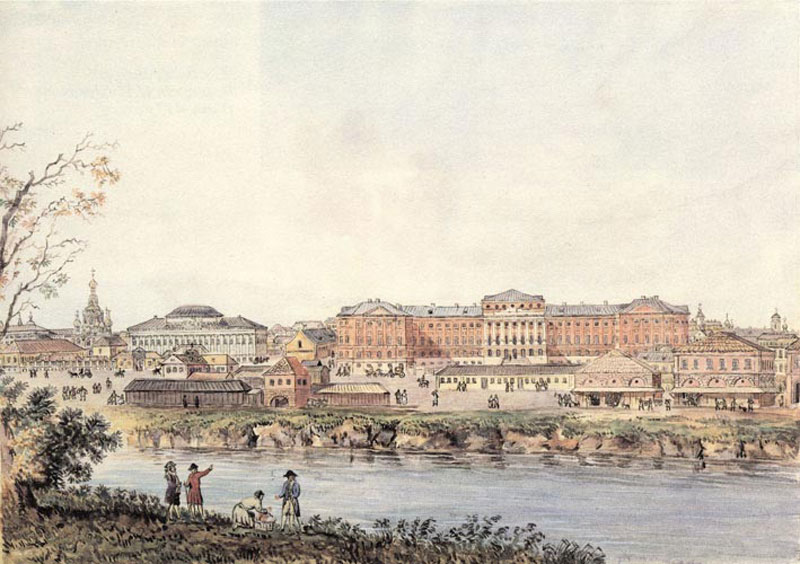
View of the building of Moscow University. Contemporary copy of a watercolor by an unknown artist. 1790s
Huge material assistance to the University was provided by patrons (Demidovs, Stroganovs, E.R. Dashkova, etc.). They acquired and donated to the university scientific instruments, collections, books, established scholarships for students. The graduates did not forget about their alma mater either. More than once, in difficult times for the university, they raised funds by subscription. According to the established tradition, professors bequeathed their personal collections to the university library. Among them are the richest collections of I.M. Snegireva, P.Ya. Petrova, T.N. Granovsky, S.M. Solovyova, F.I. Buslaeva, N.K. Gudzia, I.G. Petrovsky and others.

The lectures of university professors and student debates could be attended by the public. In April 1756, a printing house and a bookshop were opened at Moscow University on Mokhovaya Street. This marked the beginning of domestic book publishing. At the same time, the university began publishing twice a week the first non-governmental newspaper in the country, Moskovskie Vedomosti, and from January 1760, the first literary magazine in Moscow, Useful Entertainment. A year after the foundation of the university, the first readers were accepted by the university library. For over 100 years it served as the only public library in Moscow.
![]()
Miniature, watercolor: Main building University in the 1820s
In the 19th century, the first scientific societies were formed at the university: Testers of Nature, Russian History and Antiquities, and Lovers of Russian Literature.

A group of students near the building of Moscow University 1880.
The combination of the tasks of education, science and culture in the activities of the Moscow University turned it, in the words of A.I. Herzen, into the "center of Russian education", one of the centers of world culture. During the stay of Napoleonic soldiers in Moscow, the university buildings almost completely burned down. The library, archive, museum, scientific equipment were destroyed. The restoration of the university became the business of the entire Russian society. Scientific institutions, scientists, individuals donated money, books, old manuscripts, natural science collections, instruments to the university.
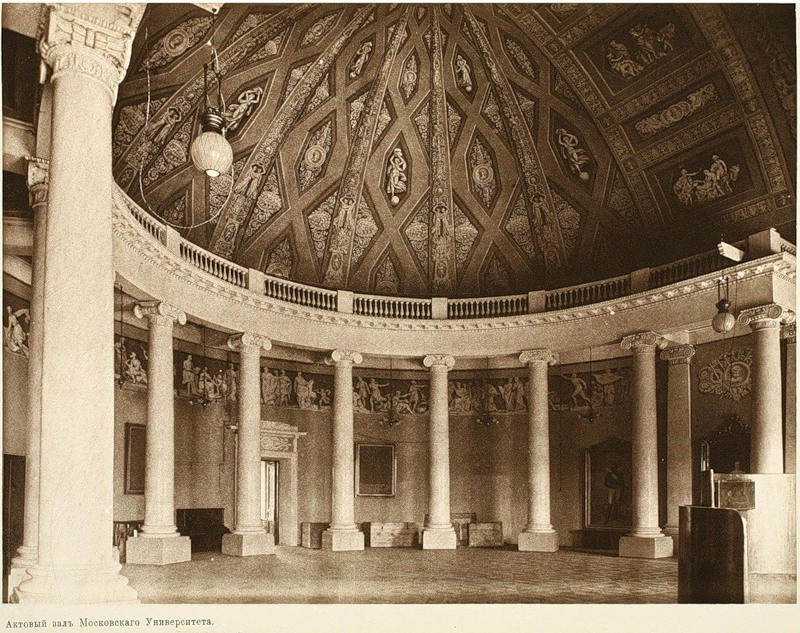
Assembly hall of Moscow University. Photograph of the late 19th century.
A new stage in the life of the university began after the fall of serfdom in 1861 and Russia's entry into the path of capitalism. At the four faculties of the university - historical and philological, physical and mathematical, legal and medical - about 1500 students studied, most of whom belonged to raznochintsy. On the initiative and with the assistance of the university, in the second half of the 19th - early 20th centuries, well-known Moscow museums arose: the Polytechnic, Historical, Zoological, Anthropology, fine arts(now Museum fine arts them. A.S. Pushkin); were opened Botanical Garden and the Zoological Garden (Moscow Zoo).


University of Moscow. 1911. K. Yuon. Paper, watercolor.
The rise of the revolutionary movement on the eve of the First World War also affected Moscow University. In 1911, in protest against the illegal dismissal of a number of professors and the violation of university autonomy, more than 130 professors and teachers defiantly left its walls. Among them are world-famous scientists: K.A. Timiryazev, P.N. Lebedev, N.D. Zelinsky, N.A. Umov, S.A. Chaplygin, V.I. Vernadsky, V.I. Picheta and others. The government responded by expelling more than a thousand students from the university, arresting and expelling revolutionary-minded students from Moscow. The number of students also dropped sharply in connection with the outbreak of the First World War in 1914.

Professors of Moscow University who resigned in protest against the arbitrariness of the authorities.
After the revolution of 1917, significant changes took place in the fate of higher education. On the one hand, its deep democratization took place. Tuition fees were abolished, students were provided with state scholarships. Since 1919, the university has been completely transferred to state funding. In order for people from working and peasant families to be able to obtain the amount of knowledge necessary for entering a university, a preparatory workers' faculty has been operating at the university since 1919. Teaching at the university in the first post-revolutionary decade was continued by world-famous scientists: D.N. Anuchin, N.E. Zhukovsky, N.D. Zelinsky, A.N. Severtsov, K.A. Timiryazev, S.A. Chaplygin.
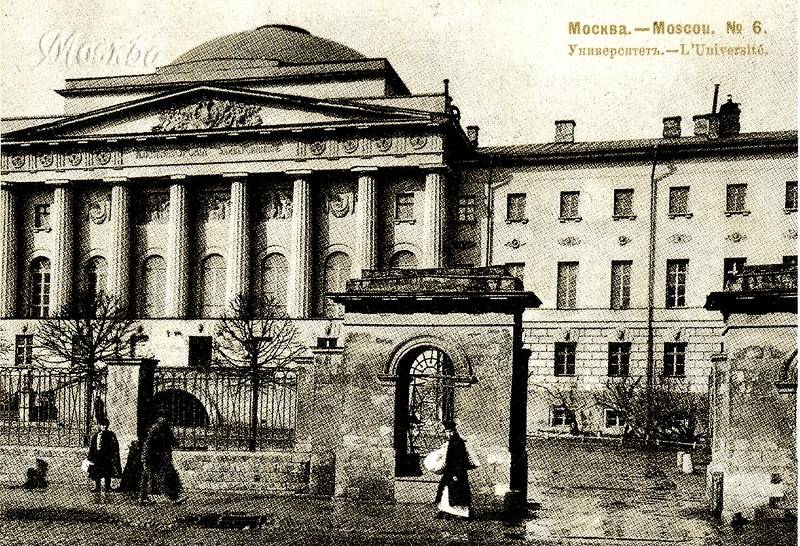
The old building of Moscow University on Mokhovaya. Beginning of XX century.
At the same time, some students and famous scientists who did not accept the new political order were forced to leave Moscow University. Some damage was also caused by the reorganizations of the 1920s and 1930s, started in pursuit of an increase in the number of specialists. Medical, Soviet law and chemical (temporarily) faculties were withdrawn from the university, and independent universities were created on their basis.

The "new" building of Moscow University, 1912.
The geological, mineralogical and geographical departments at the natural faculties were transformed into the same universities. On the basis of the humanities faculties, the Moscow Institute of Philosophy, Literature and History was opened in 1931, which merged again with Moscow State University only ten years later. By 1941, about 5,000 students were studying in the full-time department alone. Over 30 professors and researchers became full members of the USSR Academy of Sciences. University scientists have developed textbooks for higher and secondary schools.

Since October 1941, the university was evacuated, first in Ashgabat, and since the summer of 1942 - in Sverdlovsk. The university returned to Moscow only in the spring of 1943, although classes with the students who remained in the capital resumed in February 1942 after the defeat of the fascist hordes near Moscow. About 3 thousand students, graduate students, professors, teachers and employees of Moscow State University did not return from the war. In their honor next to the 1 educational building in 1975 was opened commemorative sign, and the Eternal Flame of Glory is lit.

1947
In 1948, employees of the department of the Central Committee of the Party, which oversaw science, received a task from the Kremlin: to work out the issue of building a new building for Moscow State University. They prepared a memorandum together with the Rector of the University - Academician A.N. Nesmeyanov, proposing to build a skyscraper for the "temple of Soviet science". Papers migrated from the Central Committee to the Moscow authorities. Soon Nesmeyanov and a representative of the “scientific” department of the Central Committee were invited to the city committee of the party: “Your idea is unrealistic. Too many elevators for a high-rise building. Therefore, the building should not be higher than 4 floors.

A few days later, Stalin held a special meeting on the "university issue", and the Generalissimo announced his decision: to erect a building for Moscow State University with a height of at least 20 floors on top of the Lenin Hills - so that it could be seen from afar. “... And to provide each student with a separate room in the hostel! - added the great leader and clarified with Nesmeyanov: - How many students are you supposed to have? Six thousand? So there must be six thousand rooms!” Here Molotov intervened in the conversation: “Comrade Stalin, students are sociable people. They will be bored living alone. Let at least two settle down! - “Okay, we leave three thousand rooms!”

1951-1952
The design of the new university building was prepared by the famous Soviet architect Boris Iofan, who designed the skyscraper of the Palace of Soviets. However, a few days before the approval "at the top" of all the drawings of the architect, this work was removed. The creation of the most grandiose of the Stalinist skyscrapers was entrusted to a group of architects headed by L.V. Rudnev. New faculties appeared as part of Moscow State University: the Institute of Oriental Languages (since 1972 - the Institute of Asian and African Countries at Moscow State University), the Faculty of Psychology, the Faculty of Computational Mathematics and Cybernetics, the first Faculty of Soil Science in the country. Total number full-time students increased from 13,000 in 1953 to 31,000 in 2001.
![]()
Moscow University has become a major international center training of students and graduate students. For learning foreign citizens Russian language in 1959, one of the first preparatory departments of this profile in our country was formed at the university (now the Center for International Education).

In total, from 1917 to the present, Moscow University has graduated about 180 thousand specialists and about 35 thousand candidates of science for National economy, culture and education. Currently, Moscow University includes 29 faculties, as well as 9 research institutes. More than 300 departments are represented at the faculties of the University. More than 31,000 students and about 7,000 postgraduates study at Moscow State University. The number of professors and teachers is 4 thousand people. In addition, about 5,000 researchers work at the university.

In Moscow, on April 26 (May 7), 1755, the first university in our country was opened, more precisely, on that day a part of the university was opened - a gymnasium, but three months later classes began at the university itself. The opening of the university was solemn. The only newspaper in Russia at that time said that about 4 thousand guests visited the university building on Red Square that day, music blared all day, illuminations were blazing, “there were an uncountable number of people, through the whole day, even until four in the morning.
The need for a university
Economic and socio-political development Russian Empire in the middle of the XVIII century required a significant number of educated people. Petersburg Academic University, military educational institutions and professional schools could not satisfy the state's needs for domestic specialists. Among the most enlightened people in Russia, the idea of the need to create a classical state university, where not only nobles, but also raznochintsy could study.
In 1741, Empress Elizaveta Petrovna took the Russian throne. It contributed to the development of domestic science and culture, brought educated people closer to itself. Her official policy in the field of education was to continue the work begun by her father, Emperor Peter I. He dreamed of a university that would become a center of science and culture.
Ivan Ivanovich Shuvalov

An important role in the implementation of the educational policy of Russia was played by the favorite of the Empress, the chamber junker I.I. Shuvalov. In the 1750s, Shuvalov had a noticeable influence on the internal and foreign policy Russia, contributed to the development of Russian science and art, provided patronage to scientists, writers and artists. Among other things, he supported many of the undertakings of M. V. Lomonosov. Under his patronage, Moscow University was founded in 1755 (Shuvalov became its first curator), and in 1757 the Academy of Arts was established (Shuvalov was its president until 1763). A young, charming, patriotic nobleman significantly influenced the development of domestic science and culture, patronized Russian scientists, writers, poets, and artists. Thanks to the commonwealth and cooperation of Count Shuvalov and Academician Lomonosov, the idea of creating a Moscow University was born. Count Shuvalov had no doubt that if Russia was given education, it would "compete in education" on an equal footing with all the developed peoples of Europe. These thoughts and aspirations brought him closer to M.V. Lomonosov, whom Count Shuvalov valued as an outstanding Russian scientist.
The idea of creating a university was embodied in the project of I.I. Shuvalov, written jointly with M.V. Lomonosov, which the Empress approved on January 24, 1755 by a personal decree “On the establishment of Moscow University and two gymnasiums”. But more common is the assertion that Moscow University was created thanks to the care of the great Russian scientist Mikhail Vasilievich Lomonosov, whose name it bears.
Mikhail Vasilievich Lomonosov
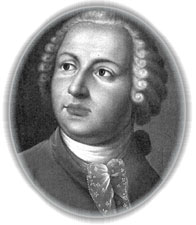
Moscow University was not the first university in Russia, but it was the first university that accepted all young people without exception, regardless of what class they belong to. From young man entering the university, one thing was required: that he was talented and wanted to study.
There has never been such a university in Russia. True, in 1725 the Academy of Sciences with a university was opened in St. Petersburg. Despite the fact that the most advanced scientists of Russia taught there: M.V. Lomonosov, S.P. Krasheninnikov, G.V. Richman, they never managed to turn the St. Petersburg Academic University into an all-Russian center of education. Foreign academics sought to maintain their exclusive position in Russia, so foreign students and teachers were preferred instead of “discovering” domestic talents in Russia.
In the winter of 1753, Mikhail Vasilievich Lomonosov left St. Petersburg for Moscow, where at that time the court of Empress Elizabeth Petrovna was located, and began to work hard to establish a university here. He developed a draft, which outlined the main provisions of the structure and activities of the first national university, and presented it to I.I. Shuvalov. Thus, Count I.I. Shuvalov became the second person to whom Moscow University owes its discovery.
On January 12 (25), 1755, on Tatyana's Day, the Empress signed a decree on the founding of Moscow University, curators of which were I.I. Shuvalov, L. Blumentrost (life physician), and director - A.M. Argamakov.
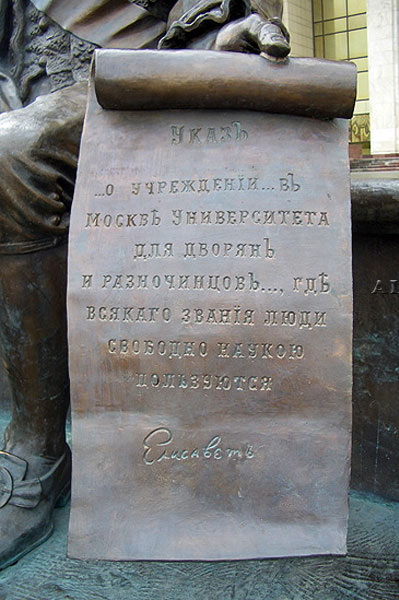
The first professors were for the most part foreigners, only two of them were Russians: N.N. Popovsky in literature and philosophy and A.A. Barsov in mathematics and literature, as well as a teacher of Russian and Latin languages F.Ya. Yaremsky - they were students of St. Petersburg Academic University.
Although Lomonosov did not attend the opening of the university and did not teach there, he took an active part in the development of Moscow University: he made sure that lectures at the first Russian university were given by Russian professors and in Russian. His efforts were crowned with success only 3 years after his death. According to the Decree of Catherine II, "for the better dissemination of sciences in Russia, lectures began in all three faculties by natural Russians in the Russian language."
The Apothecary House was chosen as the building for Moscow University, located next to Red Square at the Kuryatnye (now Resurrection) Gates. It was built at the end of the 17th century. and resembled in its design the famous Sukharev Tower. On August 8, 1754, the Empress Elizabeth signed the decree on the transfer of the Apothecary House to the Moscow University, which was being opened.
Organization of the educational process
Initially, three faculties were formed at Moscow University with a staff of 10 professors. The Faculty of Philosophy was supposed to have four professors: philosophy, physics, eloquence and history. Three professors worked at the Faculty of Law: general and Russian jurisprudence, as well as politics. It was planned that the Faculty of Medicine would have three professors: chemistry, natural history and anatomy (there were vacancies here for several years).
Scheduled classes at the faculties were held five days a week. Students were required to attend all public lectures, and those who wished could also listen to additional courses. In addition, all students participated in monthly debates, which were led by full-time university professors. A week before the next debate, its topics and the names of the speakers from among the students were announced. At the end of each semester, open debates were organized at the university with the participation of professors, all students and admirers of science from among the inhabitants of Moscow. Preparation for debates helped students in their studies. The formation of Moscow University was difficult. The number of students grew slowly - in 1758 there were only 100 of them.
Only 30 students received from the treasury a salary of 40 rubles. a year, and the rest lived on their own means. In the minutes of the university conference dated July 2, 1759, there is the following entry: “One of the reasons that prevented the success of classes was the lack of textbooks, which state-owned students could not acquire due to poverty.”
At the end of 1757, Count I.I. Shuvalov ordered that money be spent on shoes and dresses in order to adequately dress the students. At the same time, it was ordered to issue state-owned cash "in addition to the salary for food, half a month each." The instruction to the director of the university (§22) forbade students to enter the classrooms in shearling fur coats, gray caftans and bast shoes, which was considered the clothes of the poor. During the life of Lomonosov, Moscow University was not yet Imperial: the educational institution was directly subordinate to the Governing Senate, and its professorship was not subject to any court, except for the university. The activities of the university were regulated by the "Highly Approved Project on the Establishment of Moscow University". Only under Alexander I, in 1804, was a new charter of His Imperial Majesty Moscow University, according to which the rector was annually elected by the professorial meeting and approved personally by the emperor. From that time until 1917, the university was called the Imperial Moscow University.
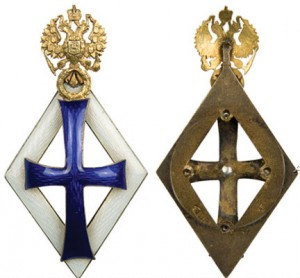
Badge of a graduate of the Imperial Moscow University
Strengthening discipline among students, encouraging their diligence in their studies, was rewarded with small swords, which gave personal nobility. For special merits, the best students received early military ranks ahead of schedule. Studying at Moscow University was equated with military service. Finishing the full course of the university, the student received the chief officer rank (military rank of junior reserve officer).
From spring in the evening, students and university gymnasiums were involved in military training. Students and gymnasium students formed a university amusing battalion, its review was held every autumn by the Moscow military commandant or one of the chiefs of the regiments stationed in the city.
Initially, students were not charged tuition fees, but state appropriations only partially covered the needs of the university, so in the future, poor students began to be exempted from fees. The university management had to find additional sources of income, not excluding even commercial activities. Huge material assistance was provided by patrons (Demidovs, Stroganovs, E.R. Dashkova, etc.). They acquired and donated to the university scientific instruments, collections, books, established scholarships for students. Do not forget your university and graduates. At a difficult time for the university, they raised funds by subscription. According to the established tradition, professors bequeathed their personal collections to the university library. Among them are the richest collections of I.M. Snegireva, P.Ya. Petrova, T.N. Granovsky, S.M. Solovyova, F.I. Buslaeva, N.K. Gudzia, I.G. Petrovsky and others.
Moscow University played a prominent role in the dissemination and popularization of scientific knowledge. The lectures of university professors and student debates could be attended by the public.
In April 1756, a printing house and a bookshop were opened at Moscow University on Mokhovaya Street. This marked the beginning of domestic book publishing. At the same time, the university began publishing twice a week the first non-governmental newspaper in the country, Moskovskie Vedomosti, and from January 1760, the first literary magazine in Moscow, Useful Entertainment. For ten years, from 1779 to 1789, the printing house was headed by a pupil of the university gymnasium, the outstanding Russian educator N.I. Novikov.
For over 100 years, the university library was the only public library in Moscow.
In the 19th century, the first scientific societies were formed at the university: Testers of Nature, Russian History and Antiquities, and Lovers of Russian Literature.
The combination of the tasks of education, science and culture in the activities of the Moscow University turned it, in the words of A.I. Herzen, into the "center of Russian education", one of the centers of world culture.
Tatyana's Day
There is a version that I.I. Shuvalov presented Elizaveta Petrovna with the Decree on the University precisely on January 25, in order to please his mother, who had a birthday that day. Since then, the celebration of Tatiana's Day, first of all, as the day of the founding of the University, has become traditional and loved by everyone who was lucky enough to study in this temple of science.
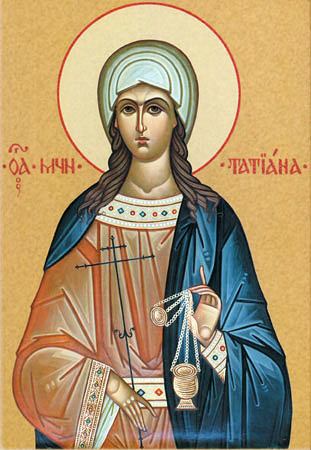
Holy Martyr Tatiana. Icon
Holy Martyr Tatiana
The Holy Martyr Tatiana was born into a noble Roman family - her father was elected consul three times. He was a secret Christian and raised a daughter devoted to God and the Church. Having reached adulthood, Tatiana did not marry and gave all her strength to the Church. She was made a deaconess in one of the Roman churches and served God, caring for the sick in fasting and prayer and helping those in need. Tatiana's righteousness was to be crowned with a crown of martyrdom.
When sixteen-year-old Alexander Severus (222-235) began to rule Rome, all power was concentrated in the hands of Ulpian, the worst enemy and persecutor of Christians. Christian blood flowed like a river. Deaconess Tatian was also captured. When they brought her to the temple of Apollo to force her to sacrifice to the idol, the saint prayed - and suddenly an earthquake occurred, the idol was blown to pieces, and part of the temple collapsed and crushed the priests and many pagans. Then they began to beat the holy virgin, gouged out her eyes, but she endured everything courageously, praying for her tormentors that the Lord would open their spiritual eyes to them. For three days she was tormented, but she did not renounce Christ. All the tortures of the tormentors were exhausted, she was sentenced to death, and the courageous sufferer was beheaded with a sword. Together with her, as a Christian, the father of Saint Tatiana, who revealed to her the truths of the faith of Christ, was also executed.
From the beginning of its foundation, the holiday was not celebrated magnificently and included a prayer service in the university church and small celebrations. However, in the 60s of the 19th century, January 25 became an unofficial student holiday, which was divided into official and unofficial parts. Official celebrations included: lunch in the dining room, a prayer service in the university church on Mokhovaya, the rector's address to students and the presentation of awards, as well as walks around the university premises: auditoriums and libraries.
After that, an unofficial program began. Students had fun and walked around the center of Moscow in groups, singing songs. The police treated the noisy students with understanding, and in the morning the police wrote the address with chalk on the backs of the students who went too far and took them home. On this holiday, all differences were erased: teachers walked with students, the rich had fun with the poor. Wealthy students dressed in a simple way and had fun with the rest of the students on the street. University graduates also celebrated this holiday with great pleasure. Thus, the founding day of the university has become a favorite holiday for all students in the country.
The holiday was so cheerful that everyone who could join and walk on this day, and a university graduate A.P. Chekhov once said about the celebration of Tatyana’s Day: “Everyone drank that day, except the Moskva River, and that was due to the fact that it was frozen ... Pianos and grand pianos crackled, orchestras did not stop. It was so fun that one student, out of an excess of feelings, bathed in a tank where sterlets swim.
After the celebration of the centenary in 1855, a tradition arose to arrange an annual meeting of graduates of Moscow University on Tatiana's Day as a regular celebration.
After the revolution, the Bolsheviks considered the holiday too violent. In 1918, the university church was closed, and a reading room. The holiday "Tatiana's Day" was replaced in 1923 with the "Day of the Proletarian Students", and the celebration of Tatiana's Day was banned. In 1992, after Viktor Antonovich Sadovnichy took office as rector, the tradition of celebrating Tatyana's Day at Moscow University was renewed.
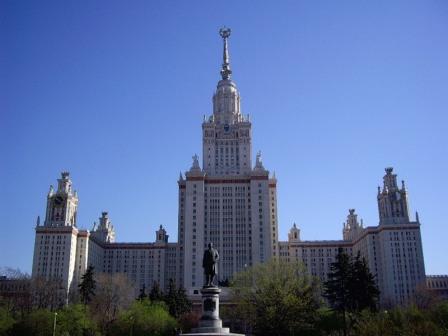
The modern building of the Moscow State University. Lomonosov
Education and formation of Moscow University
Moscow University is rightfully considered the oldest Russian university. It was founded in 1755. The establishment of the university in Moscow became possible thanks to the activities of the outstanding scientist and encyclopedist, the first Russian academician Mikhail Vasilyevich Lomonosov (1711–1765).
A.S. Pushkin rightly wrote about the titan of Russian and world science of the 18th century: “Combining the extraordinary strength of the will with the extraordinary strength of the concept, Lomonosov embraced all branches of education. The thirst for science was the strongest passion of this soul, full of passions. Historian, rhetorician, mechanic, chemist, mineralogist, artist and poet, he experienced everything and penetrated everything ... ”In the activities of M.V. Lomonosov reflected all the power, beauty and vitality Russian science, which has reached the forefront of world scientific knowledge, the successes of the country, which, after the transformations of Peter I, managed to significantly reduce the backlog from the leading powers of the world and become one of them. M.V. Lomonosov attached great importance to the creation of a system of higher education in Russia. Back in 1724, at the St. Petersburg Academy of Sciences, founded by Peter I, a university and a gymnasium were established to train scientific personnel in Russia. But the academic gymnasium and the university failed to cope with this task. Therefore, M.V. Lomonosov repeatedly raised the question of opening a university in Moscow. His proposals, formulated in a letter to I.I. Shuvalov, formed the basis of the Moscow University project. I.I. Shuvalov, a favorite of Empress Elizabeth Petrovna, patronized the development of Russian science and culture, helped M.V. Lomonosov.
After reviewing the presented by I.I. With Shuvalov's project for a new educational institution, Elizaveta Petrovna signed on January 12 (25 according to the new style) January 1755 (on St. Tatiana's Day according to the Orthodox church calendar) a decree on the founding of Moscow University. The solemn opening ceremony of classes at the university took place on the day of the celebration of the anniversary of the coronation of Elizabeth Petrovna on April 26 (May 7), 1755. Since then, these days are traditionally celebrated at the university with student celebrations, the annual scientific conference "Lomonosov Readings" and the days of scientific creativity of students are timed to coincide with them.
 In accordance with the plan of M.V. Lomonosov at Moscow University, 3 faculties were formed: philosophical, legal and medical. All students began their education at the Faculty of Philosophy, where they received fundamental training in natural sciences and the humanities. Education could be continued, specializing in law, medicine or the same philosophical faculty. Unlike universities in Europe, Moscow University did not have a theological faculty, which is explained by the presence in Russia of a special education system for the training of ministers of the Orthodox Church. Professors gave lectures not only in the then generally recognized language of science - Latin, but also in Russian.
In accordance with the plan of M.V. Lomonosov at Moscow University, 3 faculties were formed: philosophical, legal and medical. All students began their education at the Faculty of Philosophy, where they received fundamental training in natural sciences and the humanities. Education could be continued, specializing in law, medicine or the same philosophical faculty. Unlike universities in Europe, Moscow University did not have a theological faculty, which is explained by the presence in Russia of a special education system for the training of ministers of the Orthodox Church. Professors gave lectures not only in the then generally recognized language of science - Latin, but also in Russian.
 Moscow University stood out for its democratic composition of students and professors. This largely determined the widespread dissemination among students and teachers of advanced scientific and social ideas. Already in the preamble of the decree on the establishment of a university in Moscow, it was noted that it was created "for the general education of raznochintsy." People from various classes could enter the university, with the exception of serfs. M.V. Lomonosov pointed to the example of Western European universities, where the principle of estates was done away with: “At the university, that student is more respectable, who has learned more; and whose son he is, there is no need for that. During the second half of the 18th century, out of 26 Russian professors who taught, only three were from the nobility. Raznochintsy made up the majority of students in the 18th century. The most capable students were sent to foreign universities to continue their education, strengthening contacts and ties with world science.
Moscow University stood out for its democratic composition of students and professors. This largely determined the widespread dissemination among students and teachers of advanced scientific and social ideas. Already in the preamble of the decree on the establishment of a university in Moscow, it was noted that it was created "for the general education of raznochintsy." People from various classes could enter the university, with the exception of serfs. M.V. Lomonosov pointed to the example of Western European universities, where the principle of estates was done away with: “At the university, that student is more respectable, who has learned more; and whose son he is, there is no need for that. During the second half of the 18th century, out of 26 Russian professors who taught, only three were from the nobility. Raznochintsy made up the majority of students in the 18th century. The most capable students were sent to foreign universities to continue their education, strengthening contacts and ties with world science.
State appropriations only partially covered the needs of the university, especially since initially students were not charged tuition fees, and later they began to exempt poor students from it. The university management had to find additional sources of income, not excluding even commercial activities. Huge material assistance was provided by patrons (Demidovs, Stroganovs, E.R. Dashkova, etc.). They acquired and donated to the university scientific instruments, collections, books, established scholarships for students. The graduates did not forget about their alma mater either. More than once, in difficult times for the university, they raised funds by subscription. According to the established tradition, professors bequeathed their personal collections to the university library. Among them are the richest collections of I.M. Snegireva, P.Ya. Petrova, T.N. Granovsky, S.M. Solovyova, F.I. Buslaeva, N.K. Gudzia, I.G. Petrovsky and others.
 Moscow University played an outstanding role in the dissemination and popularization of scientific knowledge. The lectures of university professors and student debates could be attended by the public. In April 1756, a printing house and a bookshop were opened at Moscow University on Mokhovaya Street. This marked the beginning of domestic book publishing. At the same time, the university began publishing twice a week the first non-governmental newspaper in the country, Moskovskie Vedomosti, and from January 1760, the first literary magazine in Moscow, Useful Entertainment. For ten years, from 1779 to 1789, the printing house was headed by a pupil of the university gymnasium, the outstanding Russian educator N.I. Novikov.
Moscow University played an outstanding role in the dissemination and popularization of scientific knowledge. The lectures of university professors and student debates could be attended by the public. In April 1756, a printing house and a bookshop were opened at Moscow University on Mokhovaya Street. This marked the beginning of domestic book publishing. At the same time, the university began publishing twice a week the first non-governmental newspaper in the country, Moskovskie Vedomosti, and from January 1760, the first literary magazine in Moscow, Useful Entertainment. For ten years, from 1779 to 1789, the printing house was headed by a pupil of the university gymnasium, the outstanding Russian educator N.I. Novikov.
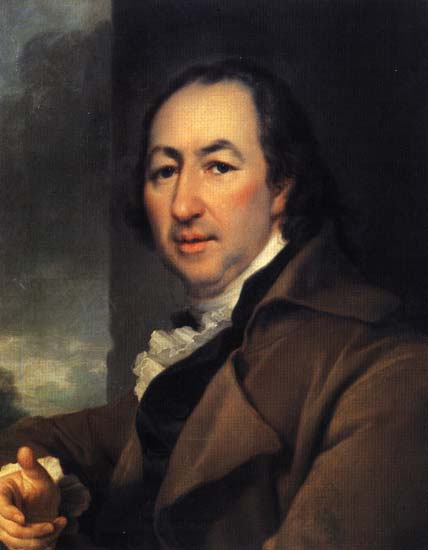 A year after the foundation of the university, the first readers were accepted by the university library. For over 100 years it served as the only public library in Moscow.
A year after the foundation of the university, the first readers were accepted by the university library. For over 100 years it served as the only public library in Moscow.
The educational activities of Moscow University contributed to the creation on its basis or with the participation of its professors of such major centers national culture, such as the Kazan Gymnasium (since 1804 - Kazan University), the Academy of Arts in St. Petersburg (until 1764 - under the jurisdiction of Moscow University), the Maly Theater, etc.
In the 19th century, the first scientific societies were formed at the university: Testers of Nature, Russian History and Antiquities, and Lovers of Russian Literature.
 In the 18th century, remarkable figures of Russian science and culture studied and worked within the walls of Moscow University: philosophers N.N. Popovsky, D.S. Anichkov; mathematicians and mechanics V.K. Arshenevsky, M.I. Pankevich; medic S.G. Zybelin; botanist P.D. Veniaminov; physicist P.I. Strakhov; soil scientists M.I. Afonin, N.E. Cherepanov; historian and geographer H.A. Chebotarev; historian N.N. Bantysh-Kamensky; philologists and translators A.A. Barsov, S. Khalfin, E.I. Kostrov; jurists S.E. Desnitsky, I.A. Tretyakov; publishers and writers D.I. Fonvizin, M.M. Kheraskov, N.I. Novikov; architects V.I. Bazhenov and I.E. Starov.
In the 18th century, remarkable figures of Russian science and culture studied and worked within the walls of Moscow University: philosophers N.N. Popovsky, D.S. Anichkov; mathematicians and mechanics V.K. Arshenevsky, M.I. Pankevich; medic S.G. Zybelin; botanist P.D. Veniaminov; physicist P.I. Strakhov; soil scientists M.I. Afonin, N.E. Cherepanov; historian and geographer H.A. Chebotarev; historian N.N. Bantysh-Kamensky; philologists and translators A.A. Barsov, S. Khalfin, E.I. Kostrov; jurists S.E. Desnitsky, I.A. Tretyakov; publishers and writers D.I. Fonvizin, M.M. Kheraskov, N.I. Novikov; architects V.I. Bazhenov and I.E. Starov.
The combination of the tasks of education, science and culture in the activities of the Moscow University turned it, in the words of A.I. Herzen, into the "center of Russian education", one of the centers of world culture.




